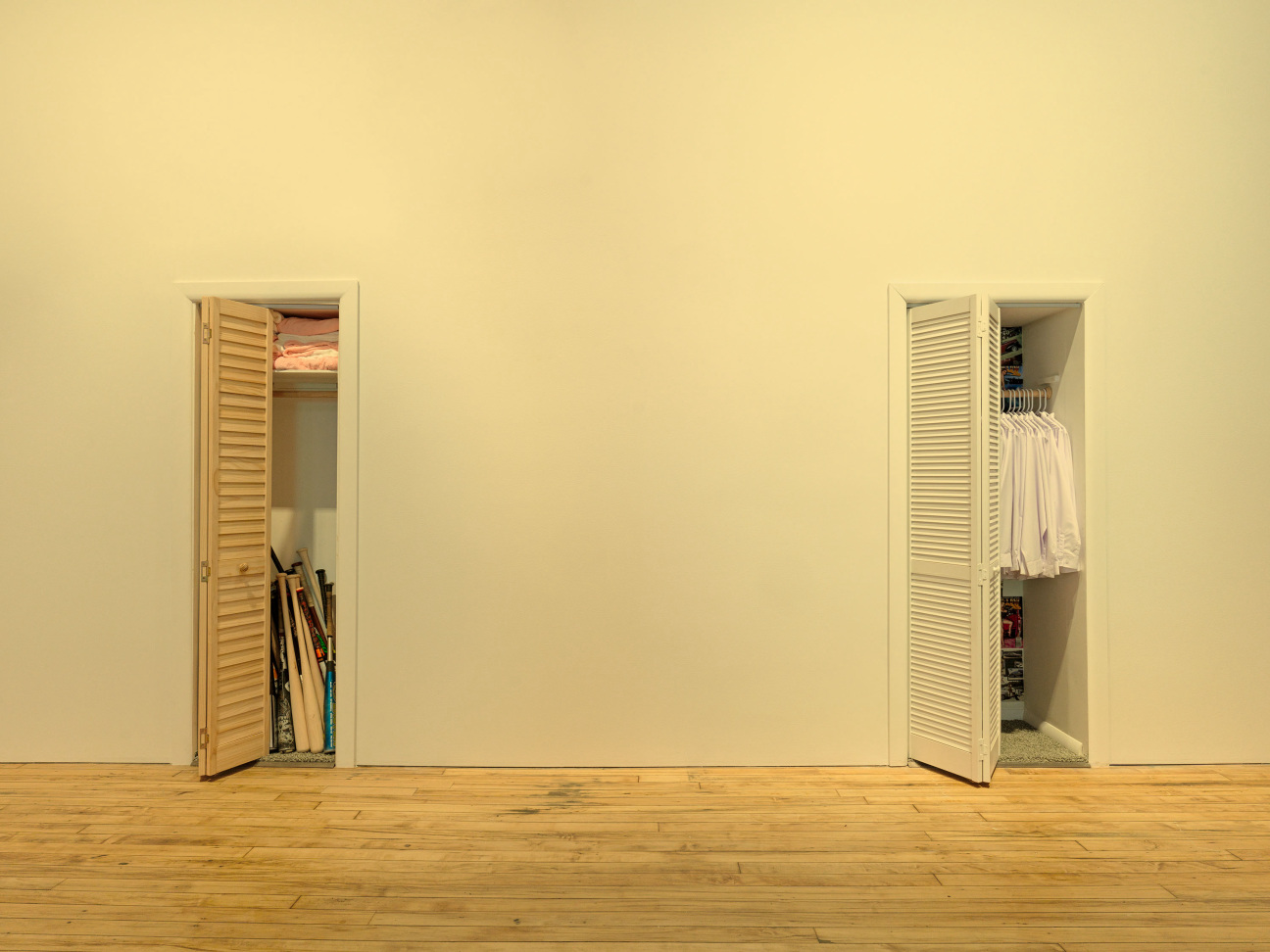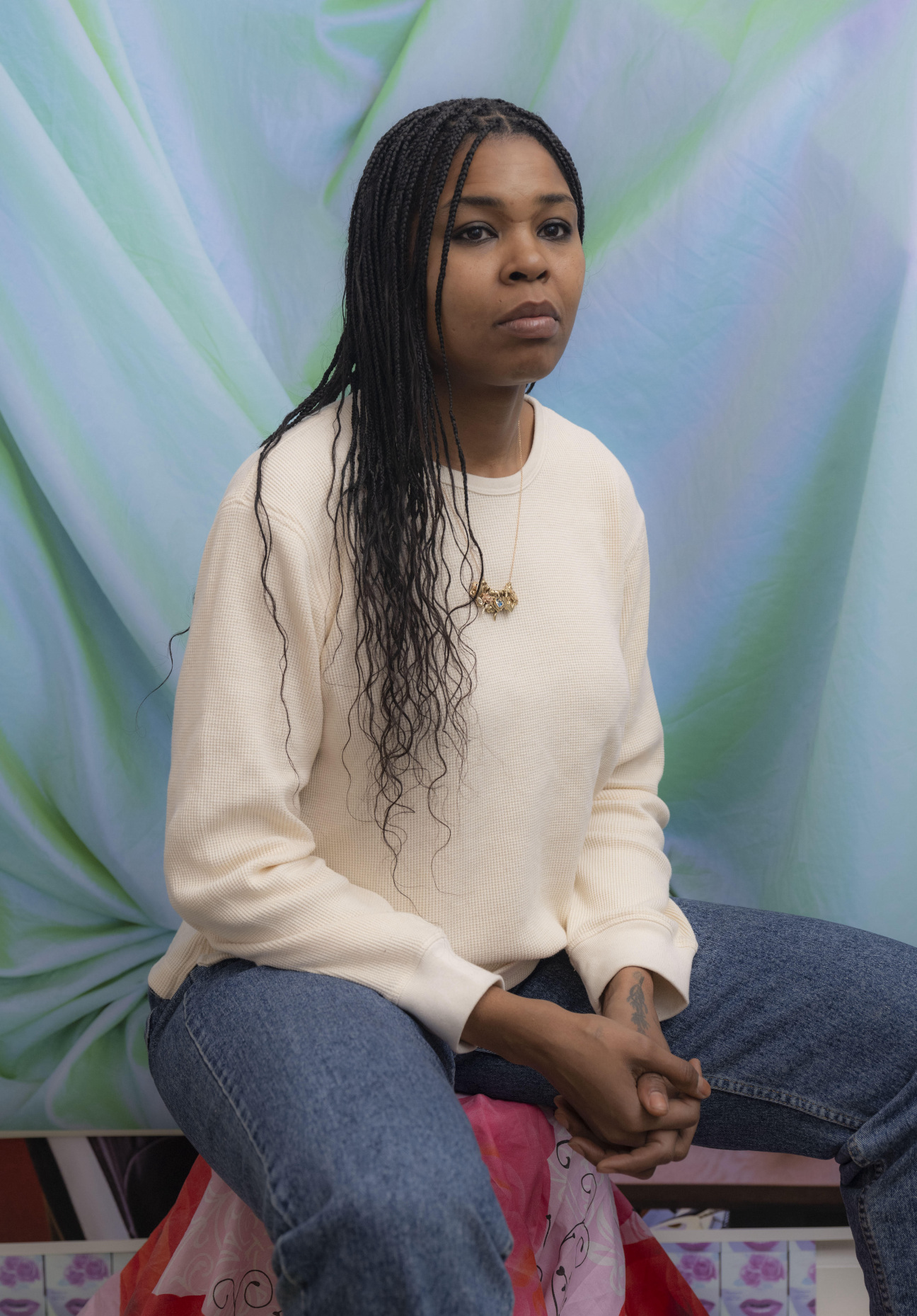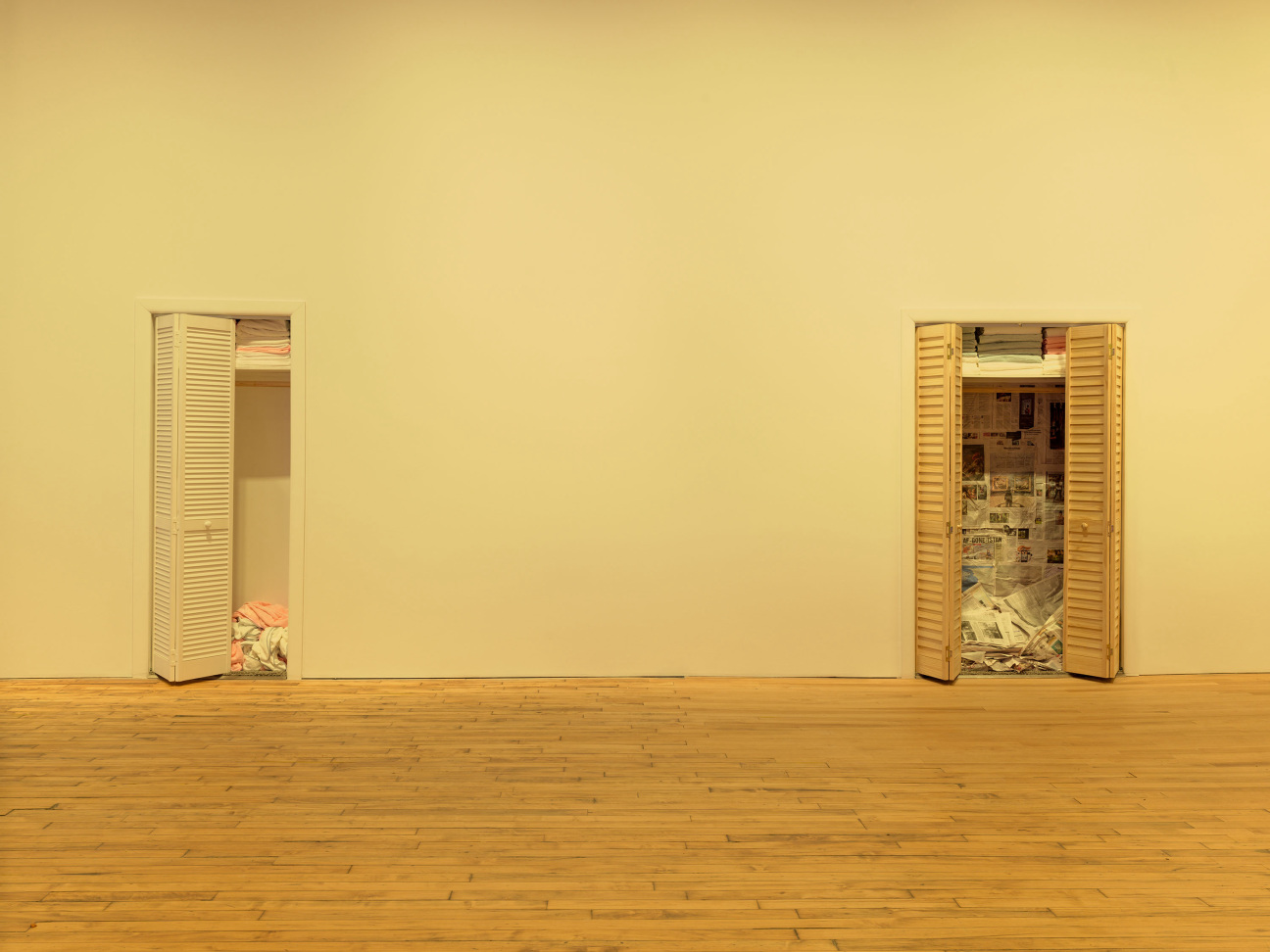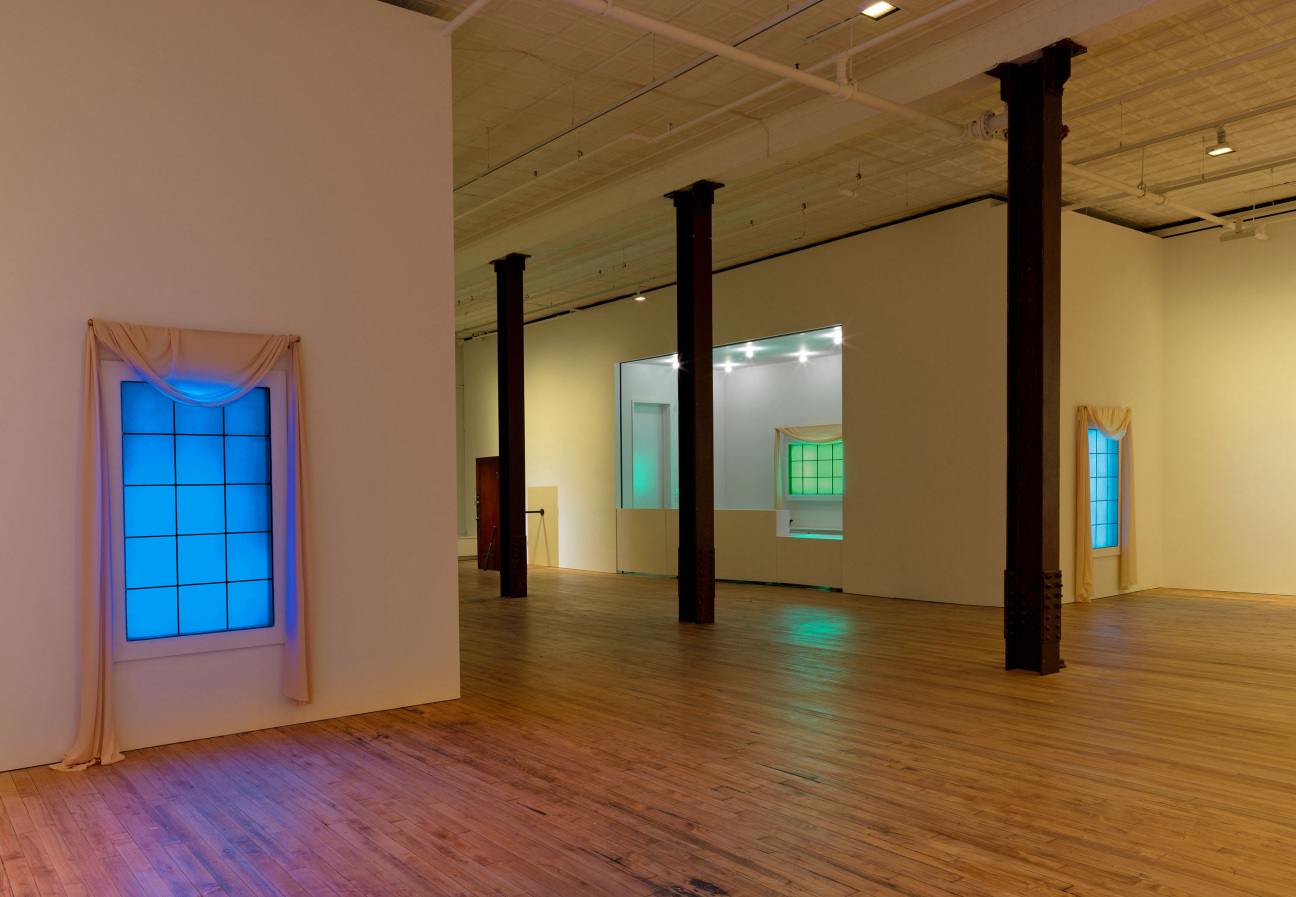
Closets as we know them today—built into a wall, most often accompanied by a door or two—made their debut in the latter half of the 19th century. Armoires, which had served as storage for weapons, garments, books, and other objects, were seen as clunky; built-in closets in contrast were marketed as a luxurious asset in a home. When it opened in the 1880s, New York’s iconic Dakota building even used the invention as a selling point to lure in affluent clients.
Over a century later, closets loom large in our cultural imagination—from Harry Potter’s dreary living conditions at the Dursley’s to Carrie’s Sex and the City walk-in—as vehicles for escape, fantasy, and extrafamilial intimacy. They’re where you put your armor to confront modern life on, and where you shed it at the end of the day. They’re great places to store things you’d rather forget. And they’re the perfect place to access another dimension—whether that’s Narnia or your 30s.
Diamond Stingily found the title for her latest show in a closet. Her family had just moved into a house outside of Chicago where she’d spend her teenage years. When her brother walked into his new room, he found a sticky note fixed to the closet door. Orgasms happened here, it read. Three words that distill the intimacy, transcendence, and libidinal potential a closet can afford.
At 52 Walker, Stingily embeds five closets—alternately filled with baseball bats, magazine pages, bricks, towels, and newspapers—into the gallery’s walls, alongside other works that point to a certain liminality, from stained glass windows to wrought iron gate fragments. The New York-based artist’s practice has often restaged spaces and objects that have defined her personal and cultural memory; here, she interrogates the things closets, church windows, and other thresholds witness—and what remains as a trace.
To mark the show, which runs through September 14, Stingily sat down with CULTURED to talk about giving herself permission to revisit work, her fascination with portals, and the literary diet she's been following.

CULTURED: Tell me about the ecosystem “Orgasms Happened Here” springs from.
Diamond Stingily: I've spent a lot of time by myself. This show started from an older piece I wanted to expand on, and from me wanting to not be so linear with my work. I don't want to just make a piece and move on—sometimes I want to elaborate as to why I made the piece or to look at it differently. I think I should be allowed to revisit and not constantly keep producing different things all the time.
CULTURED: This whole idea of novelty can be kind of a trap in the art world. Is this idea of looping back into work that’s existed in the past a way to protect yourself from that?
Stingily: Why not go back to it? Poets revise poetry all the time. That's just how I'm looking at my art to a certain extent, like you can go back and revise that if you want to.
CULTURED: Do you remember what headspace you were in when the original Orgasms Happen Here was made in 2021?
Stingily: We were all still semi in lockdown. There were still a lot of restrictions as to what people could and could not do. I do think it was collectively a traumatic experience. It was a strange time for everybody.

CULTURED: When did you decide to revisit the work?
Stingily: I've been wanting to do it for a while … I talk a lot about giving myself permission or some type of allowance. Sometimes someone will approach me and be like, “Would you like to do a show?” And I say yes. But then based on the space, I'll be like, “Okay, I have this idea in mind, and I would like to execute it here.” I want more people to see my work, and if I have opportunities for that, then I'm going to take it.
Sometimes I do shows in countries where the majority of the people don't look like me. That's fine because art should be for the masses—all types of people should be able to see my work—but I would love for more people in my image to see my work. So I also felt like this was a great opportunity because I'm showing in New York. I've been living in New York for almost 10 years, so I just want more New Yorkers to see my work too, not just people who regularly go to institutions or galleries or museums.
CULTURED: The suburban American household is very present in the show. How are you translating that for a New York audience?
Stingily: I grew up in the suburbs, but I wasn't just always in the suburbs. My parents are both from the West Side of Chicago, both of my grandmothers were still over that way and my family was still over there. I spent a lot of time in the city … I'm not nostalgic the way that a lot of people think that I am. I don't yearn for the past. I am just really fascinated with my culture.
A lot of people, especially a lot of Americans that did grow up in the suburbs, can relate to being a part of two worlds in a certain way. Having grandparents from the country, having parents from the city, and then me growing up in the suburbs, and how all these historical, economic, and personal histories have affected me and my friends and people who grew up like me.

CULTURED: What was so fascinating about the closet, a leitmotif in the show, for you?
Stingily: I kind of feel like it's a portal. I've always been fascinated with portals, how to get from one place to another. As a child, I was really superstitious, and I believed in magic. It's like the book, The Lion, the Witch, and the Wardrobe, I truly believed for a second, if you went into a closet at a certain hour, you could be someplace else or spirits or beings could come out of the closet. Doors and windows in general really fascinate me for that reason.
CULTURED: Have you had any recent experiences with closets that have been revelatory for you?
Stingily: No, but I notice that at night I always make sure my closet door isn't even cracked open. I think you should have your doors closed. That's maybe a superstition. I also think a closet space is filled with secrets. It's storage; sometimes [it holds] things you don't want to be bothered with, things you don't have the heart to donate or throw away.
My mother kept my prom dress and my American Girl dolls in the closet for years. And a lot of my friends have funny stories like, “Oh yeah, I used to masturbate in the closet,” so shame could be related to the closet space, too—things you don’t want to talk about.
CULTURED: The show also includes stained glass windows inspired by your great-great-aunt’s Baptist church in Chicago. What about that space was potent for you?
Stingily: I liked her church when I was a kid because the artistry is really beautiful in that church. Also, going to church was cool because you could see how community works. Within the church space, there are some people you don't like, but you got to work with them still. I wasn't necessarily a religious little girl. I wasn't going to church every Sunday, but what made me think of it more was when my mother and grandmother died, I remember my Auntie Pearl, who's in her 80s, was like, “You should go to church because you need community.”
I was like, “No, Auntie Pearl, I have friends.” And she was like, “I know you have friends, but you need community.” And I got what she was saying: She meant you need a group of people that actually show up. Whether or not they like you or not, you are a part of the community and they're going to help you. She was aware of something that most people my age actually lack. She was not saying I need God; she was like, "You need real community."

CULTURED: It's a community that's not going to ghost.
Stingily: There's no sunsetting on your friend because you don't know how to talk to them about this thing. Within some communities that discomfort is actually necessary to bring people closer. That's one of the reasons why I made these stained glass pieces. But I also think the Black church has changed a lot. As a kid, I thought a lot about that … Some of the work that I make is very “if you know, you know.” The work that I'm making is almost archival, because if you grew up with a Southern grandma, maybe you get it.
CULTURED: What’s your relationship to making work right now?
Stingily: I'm very blessed to be a working artist. My grandmother has said this, and I believe it to be true: You can't complain to people that do not know. But I think I could be a little bit more disciplined. I wish I was an early bird, but that's not my schedule right now when it comes to sleep. I work really good at night because right now I can't really go to sleep at night.
I don't want to beat myself up because I'm not somebody that wakes up at 5 and goes on a jog and does all these things before noon. I go in and out through phases of feeling like I'm a disciplined person and then sometimes feeling like an unorganized child. I have a love-hate relationship to the idea of work.
CULTURED: An almost adolescent yearning is central in “Orgasms Happened Here.” What do you yearn for?
Stingily: A nice, big check. Peace of mind … I don't yearn for anything I could tell a magazine about. I want something for my future self for sure, but there's no desperation.

CULTURED: Writing has been a big part of your practice in the past. Are you working on any text-based work these days?
Stingily: I'm still trying to write a novel, but those things take time. When I was in Paris, I was very confident in myself to the point of being almost a little too bold. I was like, “Oh yeah, I'm gonna write a novel this summer.” I was thinking, So-and-so did it in a summer, this person did it in a month, that could be you, but that's not me. As I'm gaining more experience, I'm really coming to accept my position in the world. As much as I wanna write, I also know to be a great writer, you have to be a reader, and I've been reading a lot more.
CULTURED: What are you reading right now?
Stingily: This past week, I've read three books: The Dry Heart and The Road to the City by Natalia Ginzburg and Roland Barthes’s Mourning Diary, which is a book that I wish I would have had the capacity to read when my mother died. Barthes kept a journal for two years after his mother died, and how he describes mourning and grieving is very articulate, graceful, and beautiful.
Reading it felt like I was listening to someone who has gone through what I've gone through, who knows the loneliness of grief. And now I’m reading Bone Black: Memories of Girlhood by bell hooks. I think bell hooks is similar to me to the extent where I don't think she's nostalgic. She writes a lot about her childhood, and she talks about her experience as a Black woman, but she was very present and future-focused.
Another book I'm reading is by Anne Carson: Glass, Irony and God. Carson makes up her own rules, and that's really cool. I noticed I like these female, almost rebel writers. I really like female writers that are weirdos. They want to be a part of the world, but they just know they're weird. They're different.
Bell hooks was so radical. She really shook the room. She made people uncomfortable sometimes. She had tea. You're not gonna be well-liked all the time if you're telling truth. Reading has been very meditative for me. I don't even want to be on social media at the moment, because I got too much going on in my personal life. I want to focus on me, my friends, and my family. I get caught up in being like, Am I doing enough for the world? I just want to be present, right now.
"Orgasms Happened Here" by Diamond Stingily is on view through September 14, 2024 at 52 Walker in New York.










 in your life?
in your life?

